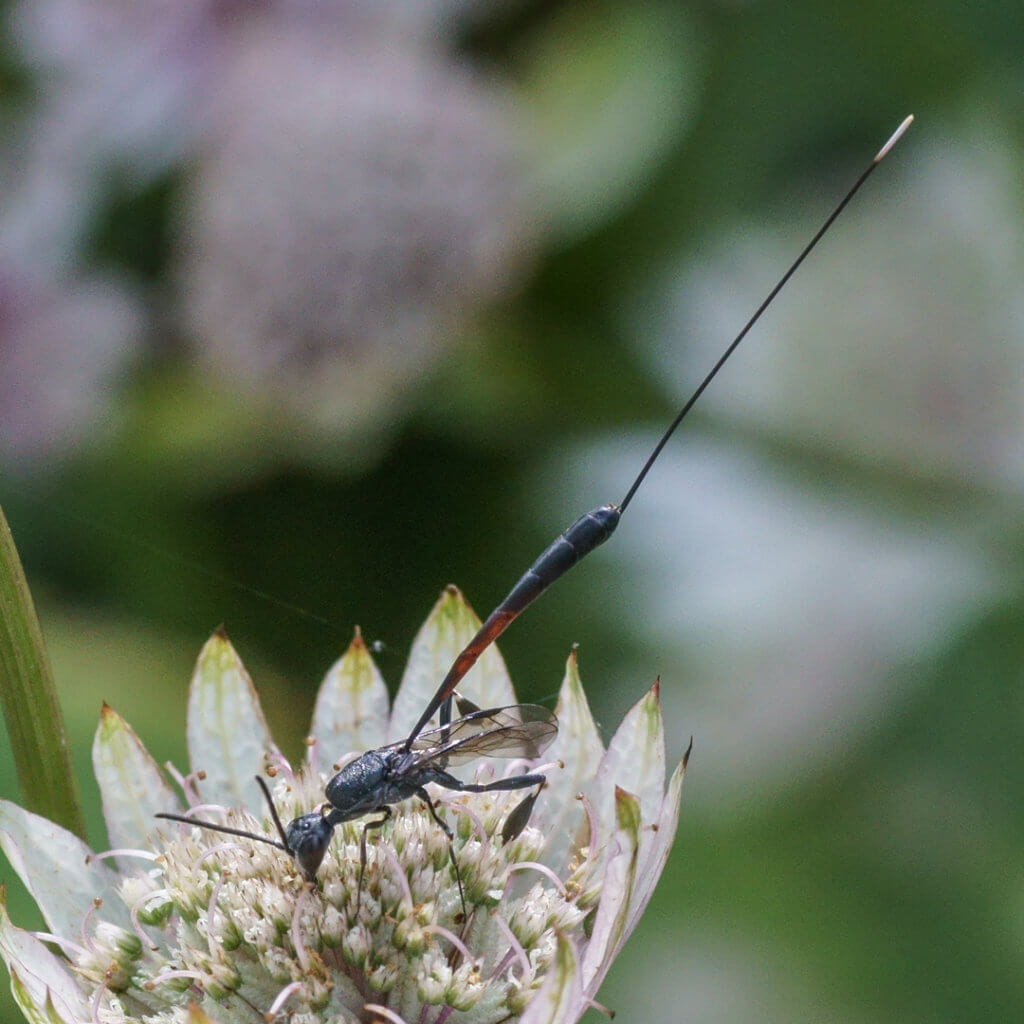
Paul writes: This strange looking creature, with a marvellous name, is a parasitic wasp. It is quite harmless to humans as the appendage to its abdomen is not a sting but an oviposter. The wasp searches out for nests of solitary wasps or bees. Once a nest is found the wasp bores its oviposter into it and lays an egg onto the bee or wasp larva in the cell. The egg hatches and the new larva eats the grub of its victim and also any stored food in the cell. It then remains in place over winter before pupating and leaving the nest, emerging as an adult in early summer.
It is found across most of Europe. In the UK there are not many records and most of them come from England south of the Humber. However my records are from North Yorkshire so it probably has a much wider distribution. I have found it twice in my garden, both times in mid July on Astrantia flowers, close to nests of Red Mason bees, so these could be one of the main prey species. If you have a bee hotel in your garden it is worth keeping an eye open on any flowers in that area. The wasp flies quite strongly and is amazingly agile despite its fragile appearance, so is quite noticeable when around.
[registration_form]
Wow!
I photographed a parasitic wasp similar to this above the cliffs just South of Aberdeen. I only had my long lens (min shooting distance 12 feet), but it was a reasonable photograph. The disappointing thing for me when I asked for help in identification are that there are so many of them.
A highlight for me, but I still find it strange that I really wanted to know exactly the species. We are all weird, but not as weird as nature.